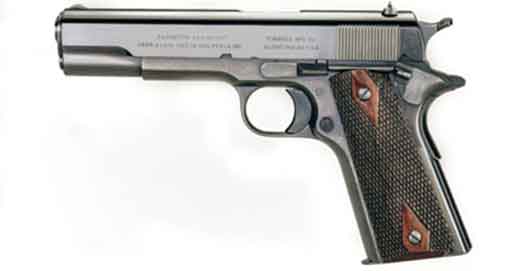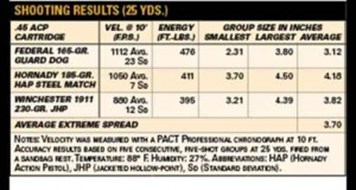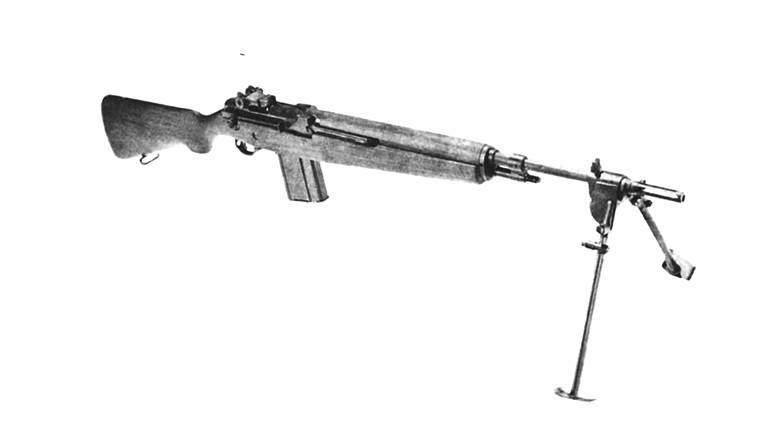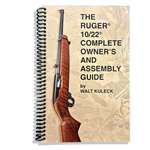
The Turnbull Mfg. Co. of Bloomfield, N.Y., is probably best known for the magnificent color case-hardening its craftsmen produce. However, the company has also built quite a reputation by accurately restoring vintage firearms to like-new condition. Not to rest on its laurels, Turnbull has recently begun to manufacture a series of M1911 pistols.
The Turnbull M1911 provided for this test is an exact reproduction of a 1918 U.S. Model of 1911 pistol in .45 ACP. The M1911 pistol was manufactured commercially from 1912 to about 1924, when a few modifications were made and the handgun became known as the M1911A1.
It appears that Turnbull went to great lengths to accurately reproduce the original M1911. The sights are of the small, military-style from days gone by, with the rear unit having a semi-circular notch. The hammer is of the knurled, beavertail design. The ejection port is also of World War I design, as is the short-spur grip safety. It has the long trigger and flat mainspring housing just like the original. The two magazines that come with each gun continue the quest for historical accuracy by being of the two-tone coloration associated with guns of this period. Some of the early M1911s came with lanyard loops on the flat mainspring housing and magazine, others did not. Turnbull’s copy of this pistol does not have lanyard loops.
In order to complete this duplication of the early M1911, the Turnbull staff hand polishes each pistol just like the originals were years ago. The finish is period-correct carbonia charcoal bluing. And the attractive appearance of the pistol is set off by the hand-checkered, double-diamond stocks made from American black walnut.
We tested the Turnbull M1911 with three modern .45 ACP defense loads. Federal was represented by its 165-gr. Guard Dog round, which gave an average velocity of 1112 f.p.s. Next up was the Hornady 185-gr. Steel Match hollow-point load with an average velocity of 1050 f.p.s. And the accuracy test was rounded out with Winchester’s 230-gr. jacketed-hollow-point 1911 load, giving an average velocity of 880 f.p.s. Accuracy was uniform regarding the three brands of cartridges fired, with the Federal 165-gr. Guard Dog load being slightly in the lead. It should be noted that group sizes were somewhat adversely affected by the small sights, which are authentic for this period of M1911.
Throughout the tests, the Turnbull M1911 functioned flawlessly. The slide-to-frame fit was tight and without any noticeable burrs, and the barrel locked up tightly. The trigger exhibited slight creep, but broke cleanly at 4 lbs., 11 ozs. Trigger reset was positive.
Just to keep the record straight, around the year 1924 the M1911 pistol was modified in several ways that have become standard practice today. The sights were enlarged, though they were still small by today’s standards. A short trigger and an arched mainspring housing were used. And the spur on the grip safety was lengthened to prevent the slide from biting the web of the shooting hand for those with large hands.
It is important to keep in mind that Turnbull set out to build a historically accurate copy of the original M1911 pistol. It will be of value to historical re-enactors and those who shoot the Wild Bunch matches in SASS and other cowboy events. In addition, the prices of original M1911s in decent shape have greatly increased through the years to the point that they may be out of the range of many of today’s shooters.
Sadly, a number of reproduction guns only resemble the appearance of the historic examples they copy. Turnbull obviously took the time and effort to reproduce not only the appearance of the original M1911, but also its quality. One can hardly handle and shoot this Turnbull M1911 without thinking of the likes of Black Jack Pershing and his ride into Mexico, or Alvin York and the rest of the boys who went “over the top” in Europe during World War I.
It is that good.
Manufacturer: Turnbull Mfg. Co., 6680 State Route 5 and 20, Bloomfield, NY 14469; (585) 657-6338; turnbullmfg.com
Cartridge: .45 ACP
Action Type: recoil-operated, semi-automatic center-fire pistol
Frame: forged steel
Slide: forged steel
Rifling: 1:16" RH twist
Magazine: detachable box; seven-round capacity
Stocks: checkered walnut
Sights: fixed front; drift-adjustable rear
Trigger: single-action; 4-lb., 11-oz. pull
Overall Length: 8.5"
Width: 1.34"
Height: 5.45"
Weight: 38 ozs.
Accessories: spare magazine, plastic case
Suggested Retail Price: $2,150
























![Auto[47]](/media/121jogez/auto-47.jpg?anchor=center&mode=crop&width=770&height=430&rnd=134090788010670000&quality=60)
![Auto[47]](/media/121jogez/auto-47.jpg?anchor=center&mode=crop&width=150&height=150&rnd=134090788010670000&quality=60)












